23 Perennials That Grow in Shade (With Pictures)
-
Shea Cummings
- Last updated:
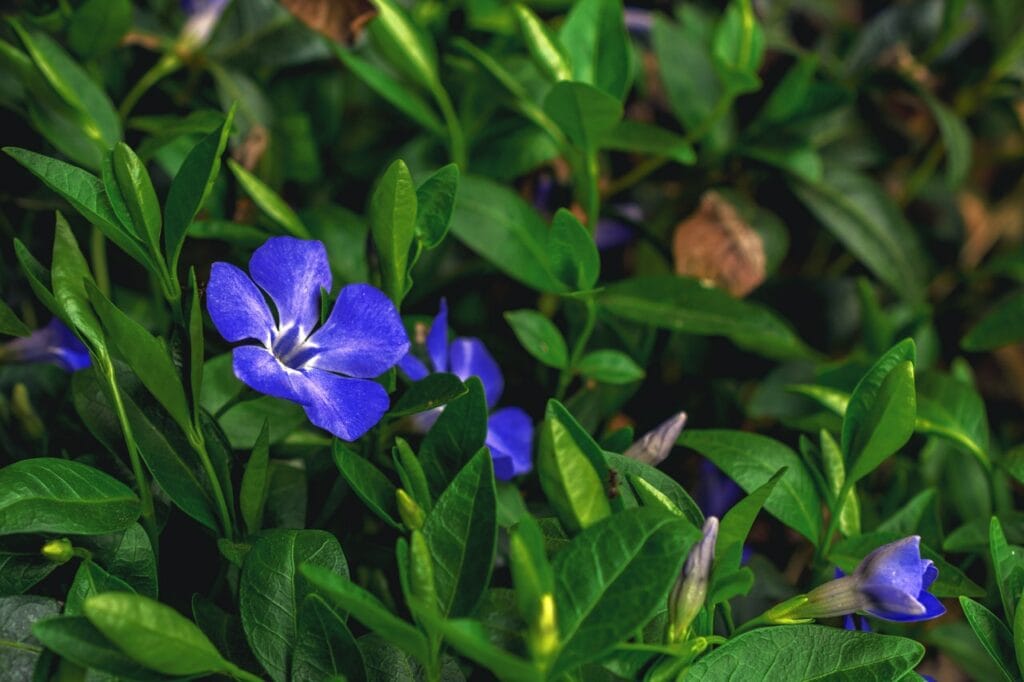
There are plenty of spaces around your house or yard that you probably ignore as far as plants are concerned. But did you know that there are a ton of different flowers that do well—even without much sun?
Shade-loving plants often have some of the most beautiful foliage and unique flowers. Let’s check out 23 perennials that you can grow in the shade.
The 23 Perennials That Grow in Shade
1. Madagascar Periwinkle
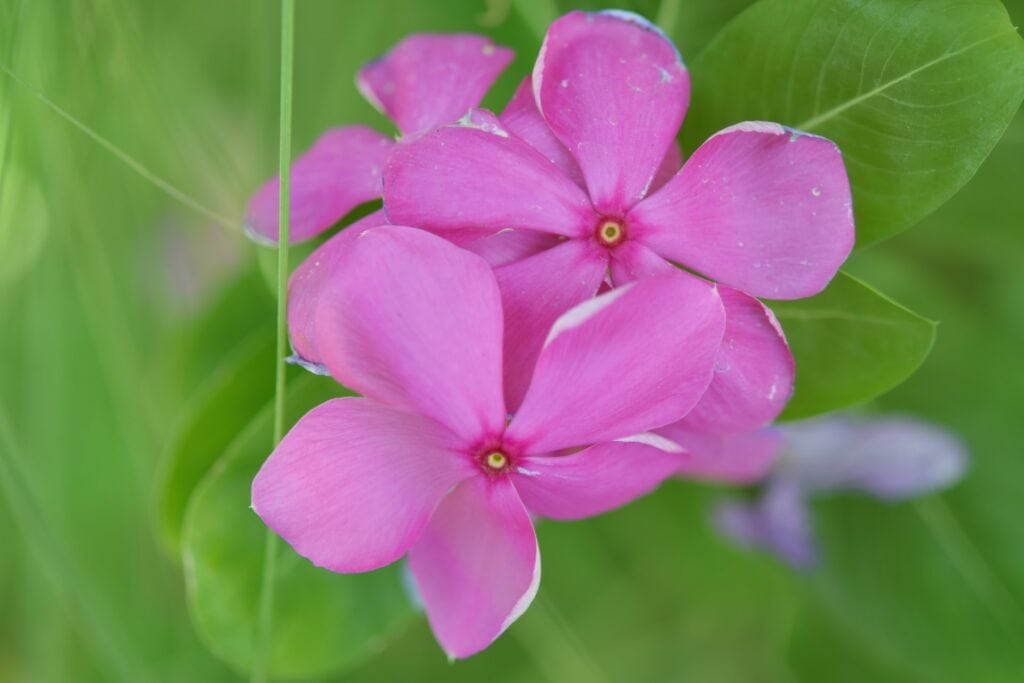
| USDA Zone: | 9–11 |
| Botanical Name: | Catharanthus roseus |
| Mature Height: | 6–18 inches |
The Madagascar periwinkle is a tropical perennial that is typically grown as an annual in many areas. It’s characterized by deep green foliage and purple flowers. This flower enjoys a nice sunny spot. However, it does well in partial shade as well. And being that it’s relatively drought-tolerant and pest-resistant, it doesn’t require a lot of attention to thrive.
2. Creeping Jenny
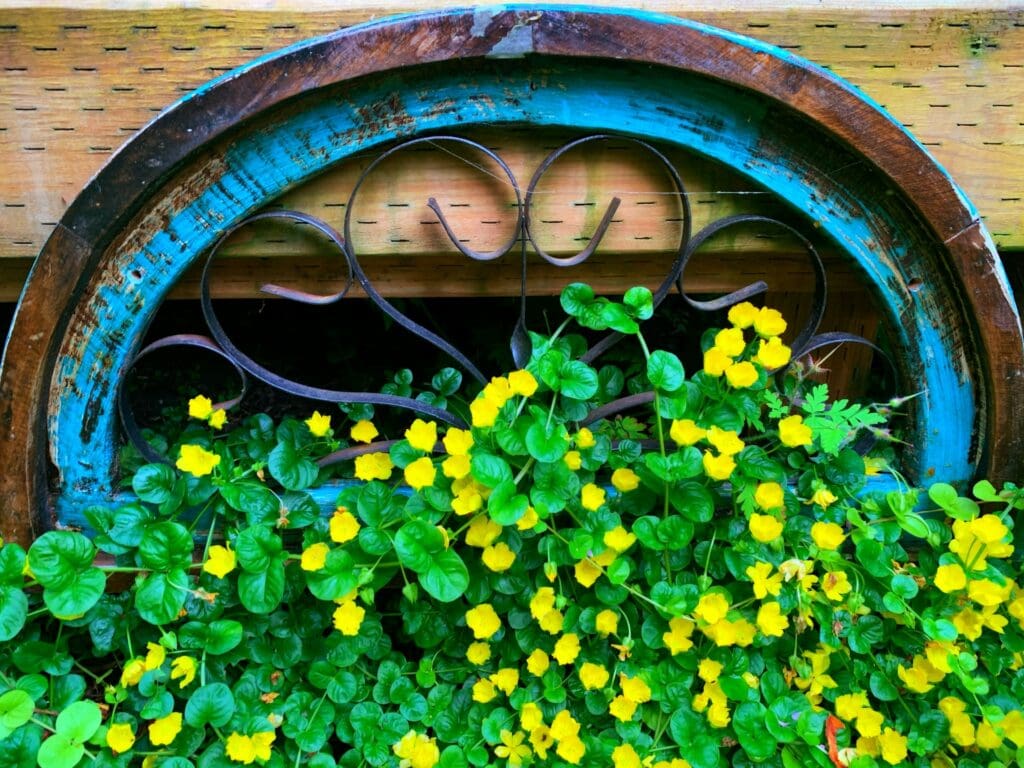
| USDA Zone: | 4–9 |
| Botanical Name: | Lysimachia nummularia |
| Mature Height: | 2–4 inches |
Your local nursery may not have access to creeping Jenny because it’s actually considered an invasive plant in many areas. However, small yellow flowers and beautiful foliage make this a great addition to your space as a hanging plant or ground cover plant. Because it spreads so quickly, it’s important you control the plant, or creeping Jenny will quickly take over your garden.
With creeping Jenny, how much or little sun it gets changes its foliage. If you plant it in full sun, you’ll get golden yellow leaves. But if you keep it in the shade, they’ll be a lovely chartreuse green.
3. Hydrangea
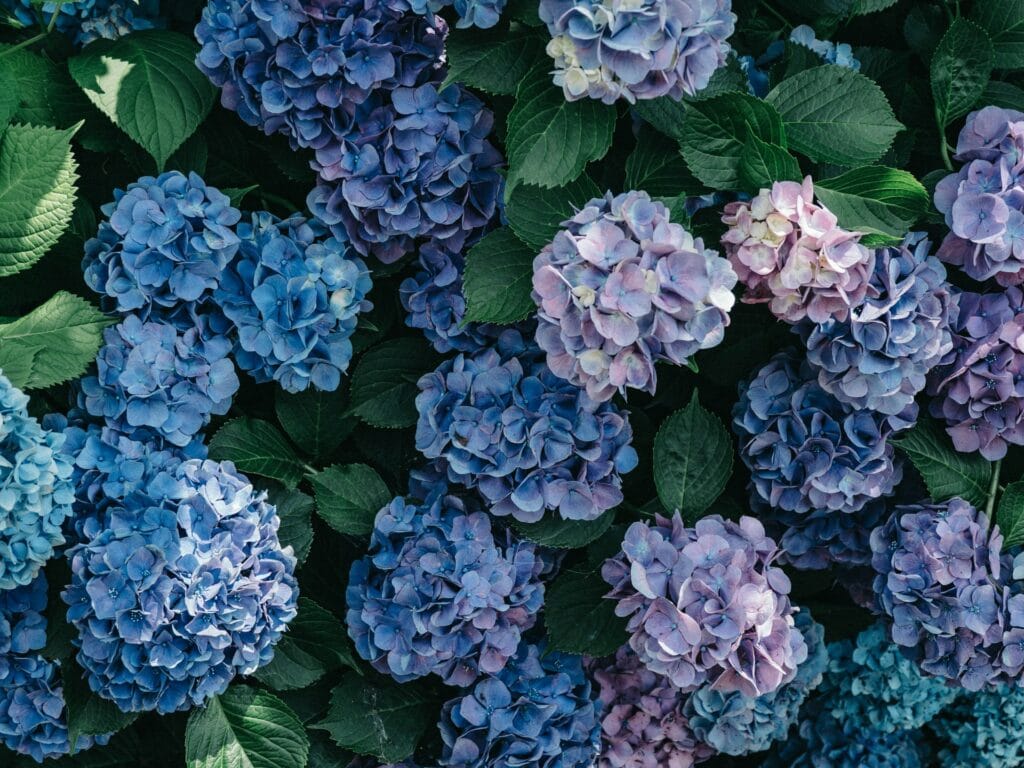
| USDA Zone: | 5–9 |
| Botanical Name: | Hydrangea spp. |
| Mature Height: | Up to 15 feet (dependeant on variety) |
Hydrangeas are an easily recognizable shrub by their flowers. The flowers range across several different colors and make a beautiful and fragrant addition to any yard. And they can thrive in many different growing conditions.
Full shade can negatively impact how profusely the plant flowers. But on the other hand, full sun will require extra care and attention to watering—especially on hot days. The perfect balance for a hydrangea seems to be a good dose of morning sun and shade for the rest of the day.
4. Chinese Ground Orchid
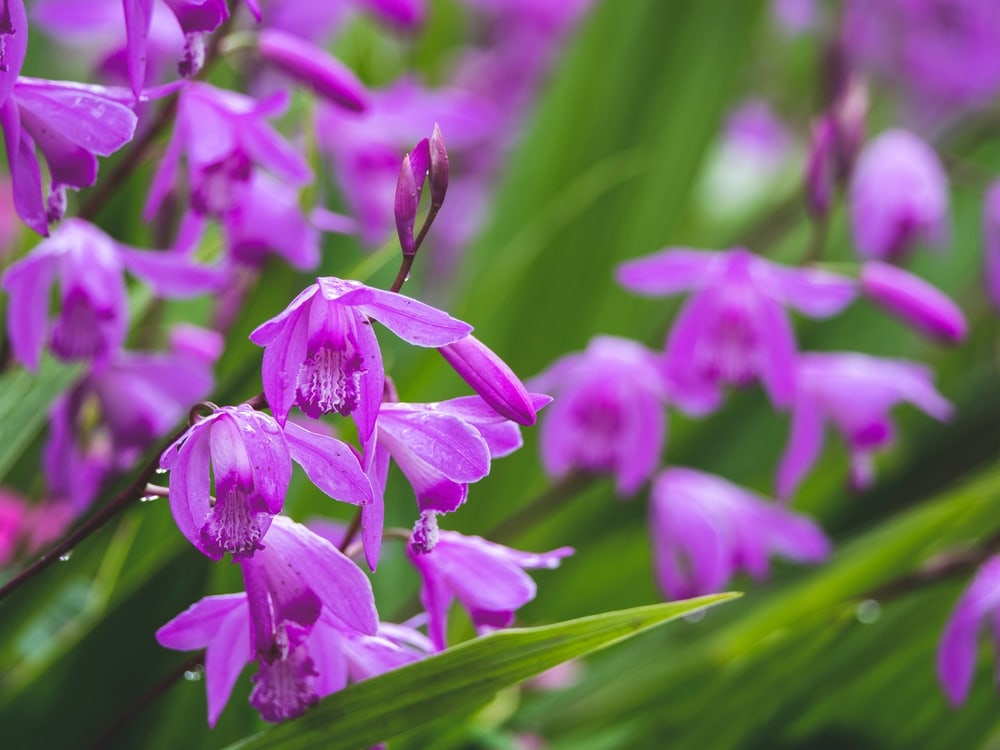
| USDA Zone: | 5–9 |
| Botanical Name: | Bletilla striata |
| Mature Height: | 1–2 feet |
While it may look delicate, the Chinese Ground Orchid is actually a relatively hardy and low-effort plant to care for. Its pretty pinkish-purple flowers bloom for four to six4–6 weeks during the summer. The plant makes a great addition to a flower bed or containers.
It may be an easy plant to care for, but the Chinese Ground Orchid prefers partial or full shade. It doesn’t do well in the hot summer sun. So, when planting, ensure it’s going to receive lots of shade. Sometimes container planting is easier because you can always move it to a shady spot.
5. Lily of the Valley
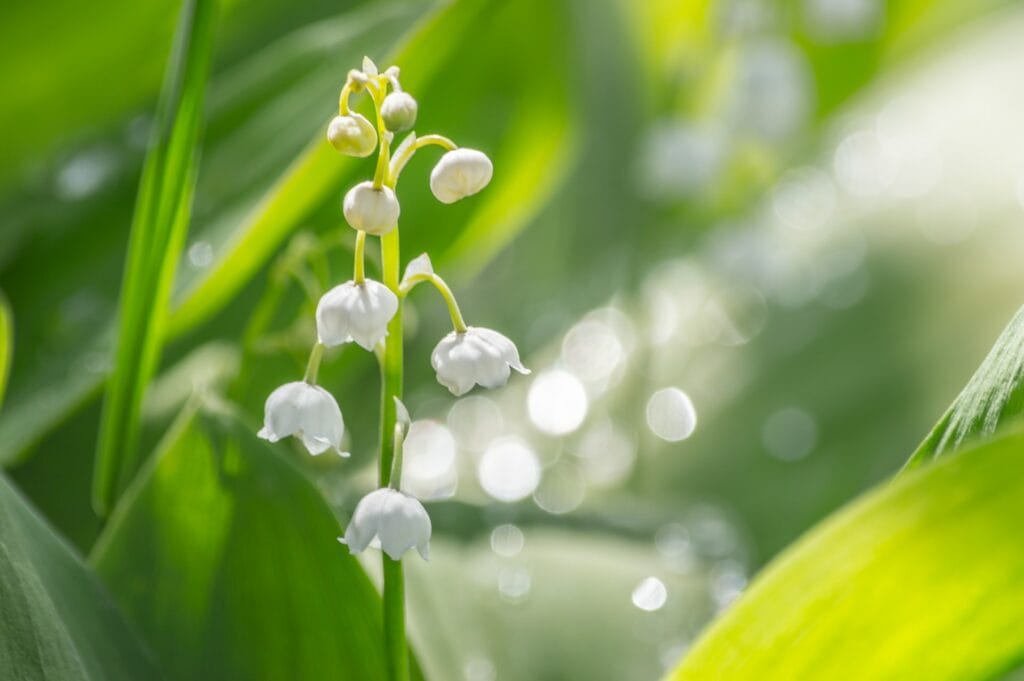
| USDA Zone: | 3–8 |
| Botanical Name: | Convallaria majalis |
| Mature Height: | 6–12 inches |
Lily of the valley gets its name for the way its beautiful white flowers resemble lilies. It’s not actually a lily, though. Surprisingly, it belongs to the asparagus family. But it’s not edible. On the contrary, it’s quite toxic to humans and pets—even if its red-orange berries look good to eat.
If you want to see your lily of the valley thrive, ensure that it receives at least partial shade. Full shade is its preferred habitat if the weather is really hot. The foliage will lose its luster, and the plant won’t flower well if it’s subjected to the hot summer sun.
6. Hakone Grass
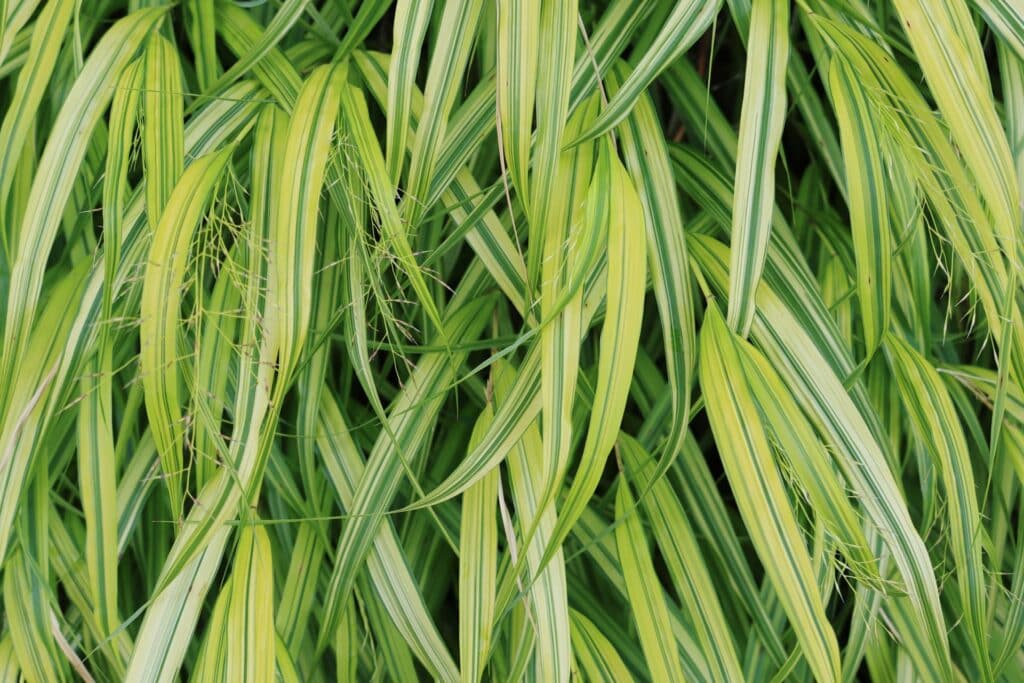
| USDA Zone: | 5–9 |
| Botanical Name: | Hakonechloa macra |
| Mature Height: | 1–2 feet |
Hakone grass is one example of ornamental grass that thrives in many different environments. Unlike many other types of grass, this one will thrive even in moist and shady conditions. It’s also a multi-season plant. During the spring and summer, the leaves are green. Then into the fall, they turn the most wonderful copper-orange colors.
The nice thing about Hakone grass is how easy it is to take care of. Whether you’re planting it in full shade, partial shade, or full sun, it will thrive with minimal effort on your part.
7. Hosta
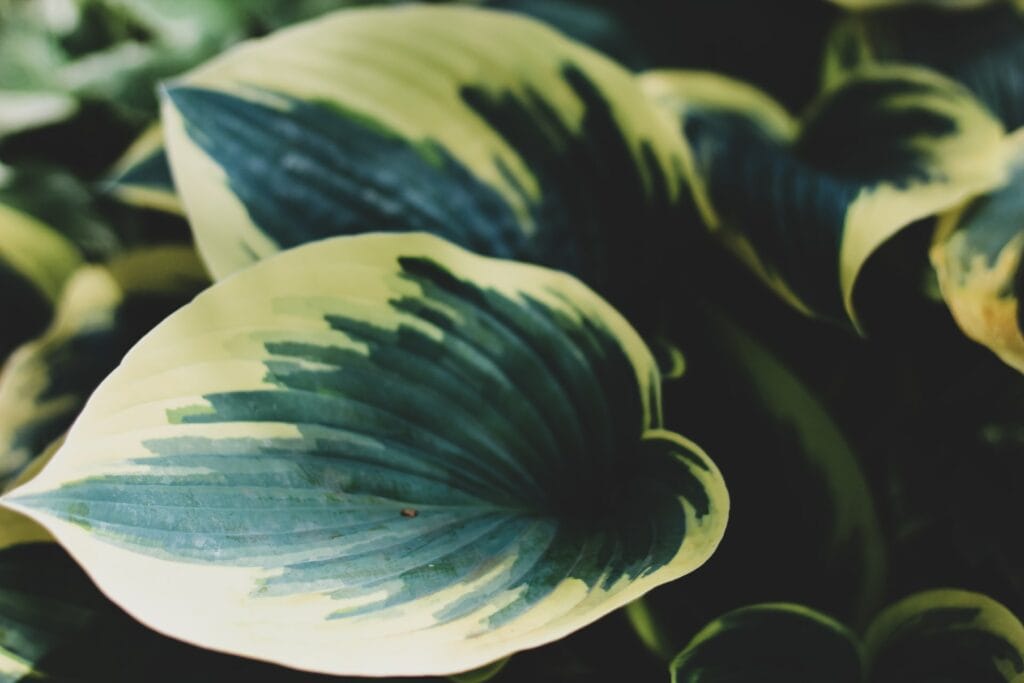
| USDA Zone: | 3–9 |
| Botanical Name: | Hosta spp. |
| Mature Height: | 6–48 inches |
Hosta plants can survive in a wide variety of climates. Although, they prefer to live in full or partial shade. Depending on the variety you’re growing, they can take up to seven 7 years to reach their full maturity.
Hostas produce delicate white flowers, but their distinguishing feature is their unique leaves. The foliage is mostly a deep green with light green-white markings throughout the leaf. A little bit of sun helps enhance the color, but you’ll notice fading color or brown tips on the leaves if the plant is getting too much sun.
8. Bleeding Heart
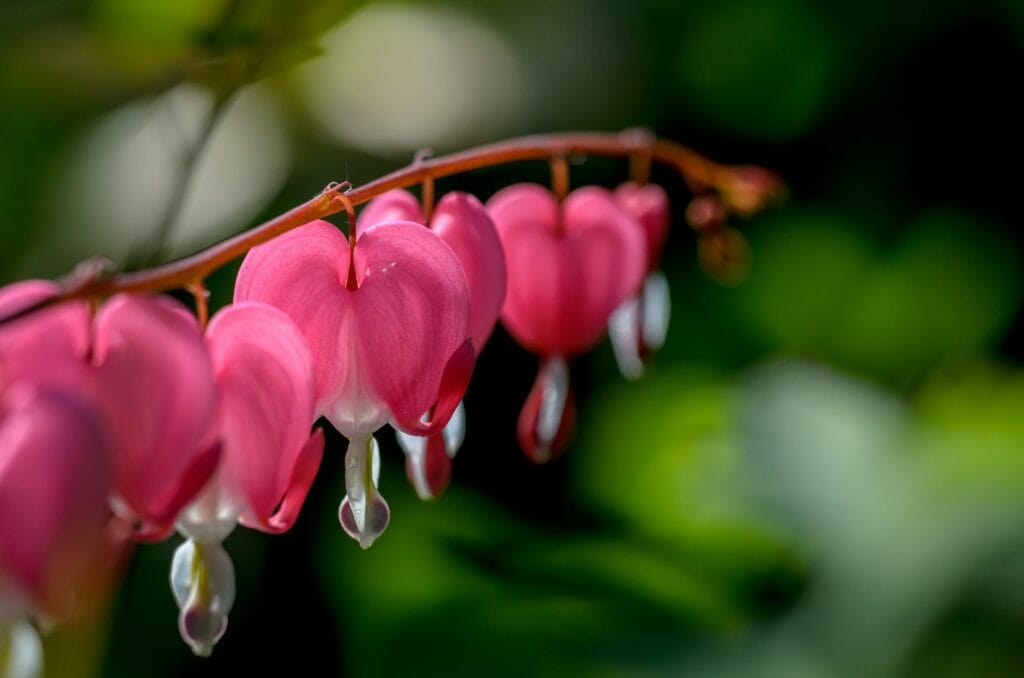
| USDA Zone: | 2–9 |
| Botanical Name: | Lamprocapnos spectabilis |
| Mature Height: | 6–36 inches |
The dangling flowers of the bleeding heart look like heart-shaped pillows. They bloom for several weeks during the cool spring months. These plants do not like the heat or sun, so they do not bloom throughout the summer.
Bleeding heart plants are not ideal for beginner gardeners. They are not overly hardy and need to be protected from several things like strong winds and heat.
9. Foamflower
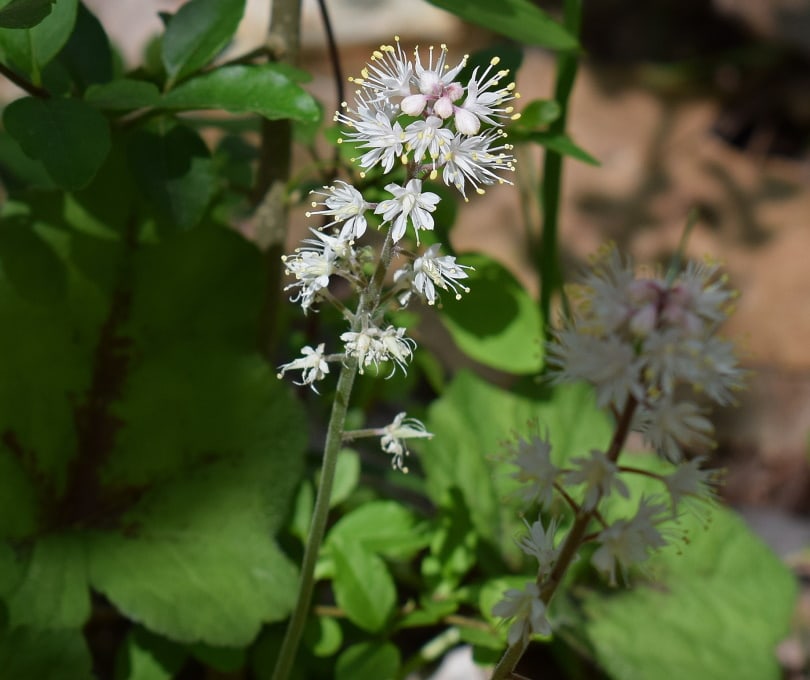
| USDA Zone: | 3–8 |
| Botanical Name: | Tiarella cordifolia |
| Mature Height: | 1–3 feet |
Foamflowers got their name because of their “foamy” bunches of white or pink flowers. They make a unique ground cover plant because they have dense bunches of foliage from which the long stems of flowers extend.
These shade-loving plants require at least partial shade, but they prefer full shade in most cases. If they are getting any sun during the day, it has to be morning sun, so they aren’t subjected to the heat.
10. Spotted Dead Nettles
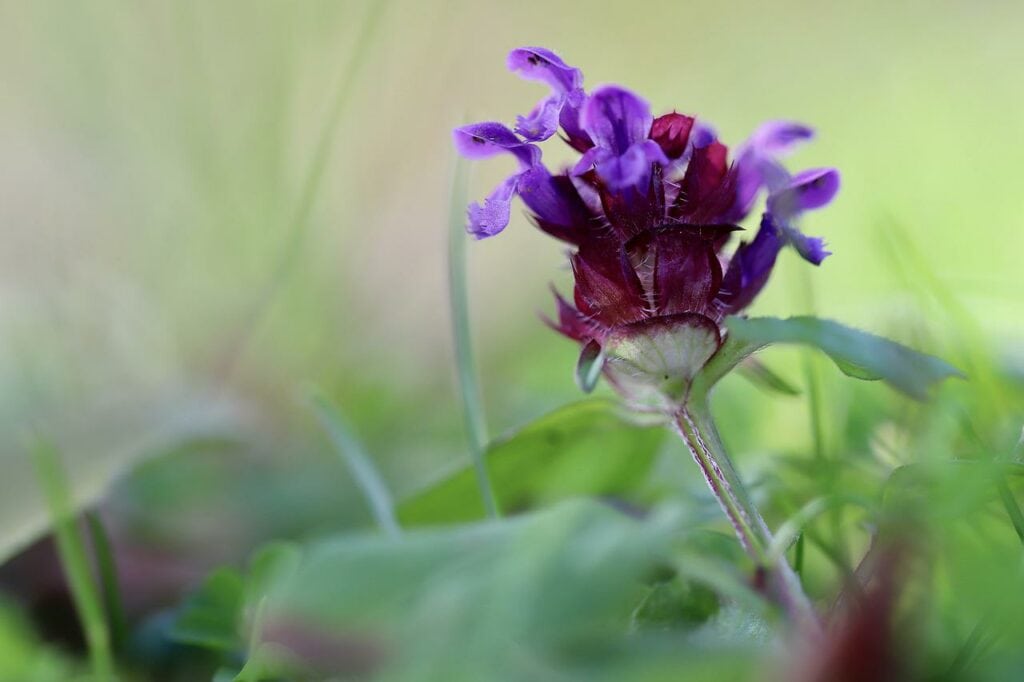
| USDA Zone: | 4–8 |
| Botanical Name: | Lamium maculatum |
| Mature Height: | 3–12 inches |
Spotted dead nettle may not grow very tall, but it will spread out two to three2–3 times as wide as it is tall. So, it makes a great shady ground cover plant that will fill spots in your garden or yard that may otherwise remain empty aside from weeds.
Being part of the mint family alone is a testament to their hardiness. If you are growing them in full shade, they won’t even need a lot in the way of watering. So, they make a great low-maintenance plant to add to your shady garden.
11. Astilbe
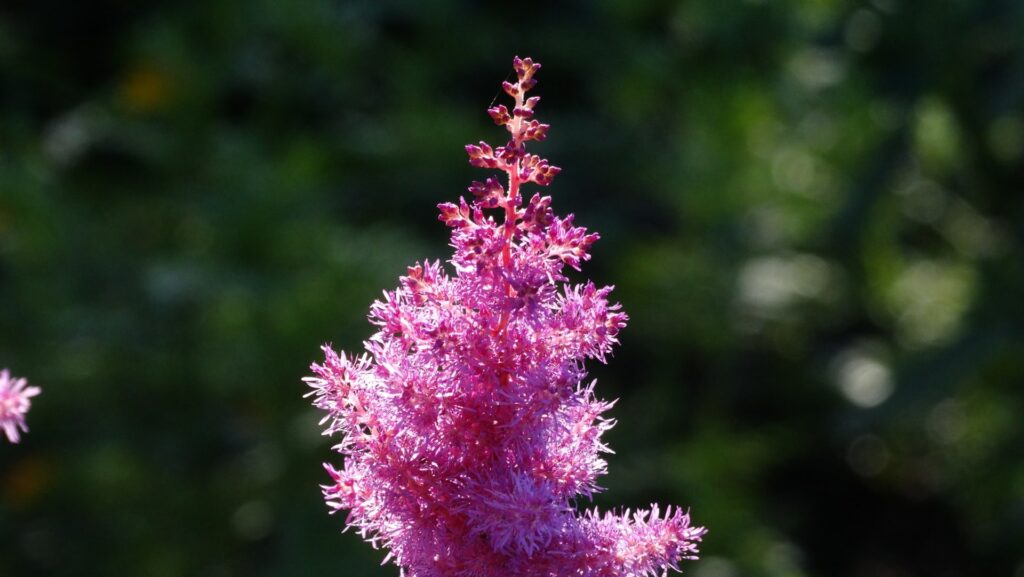
| USDA Zone: | 3–8 |
| Botanical Name: | Astilbe spp. |
| Mature Height: | 6–24 inches |
If you’re looking for a simple perennial for your garden, astilbes are a fantastic option. Some common colors for their plume-like flowers include pink, purple, red, and white. These plants are resistant to pests and disease and require very little maintenance.
Astilbes will grow well in full shade or full sun. Typically they will grow larger if they have some sun. So partial shade seems to be the ideal growing condition for these beautiful plants.
12. Ferns
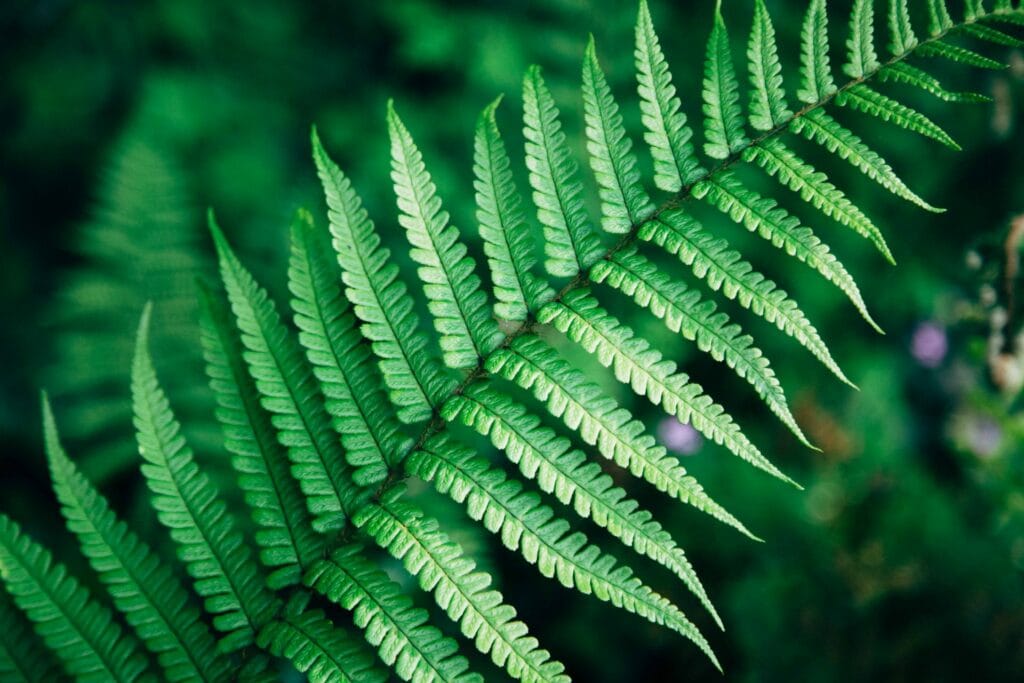
| USDA Zone: | 4–8 |
| Botanical Name: | depends on species |
| Mature Height: | depends on species |
There are nearly 12,000 different species of ferns. The vast majority of them prefer shady locations. However, partial shade is ideal. But more importantly than the amount of shade they get is ensuring they are watered adequately and have a humid environment. Most species are relatively temperature resistant, though.
13. Greek Valerian

| USDA Zone: | 4–9 |
| Botanical Name: | Polemonium caeruleum |
| Mature Height: | 1–2 feet |
The Greek valerian plant is prized for its beautiful bell-shaped flowers. Depending on the variety, a couple of common colors you’ll find are blue or lavender. The particular cultivar determines how much shade it needs, but typically Greek valerian thrives in partial or dappled shade.
This plant can be a bit finicky as a garden plant because it’s fairly sensitive to soil quality and moisture. That being said, it’s relatively easy to grow from seed, so it’s a nice container plant.
14. Coral Bells
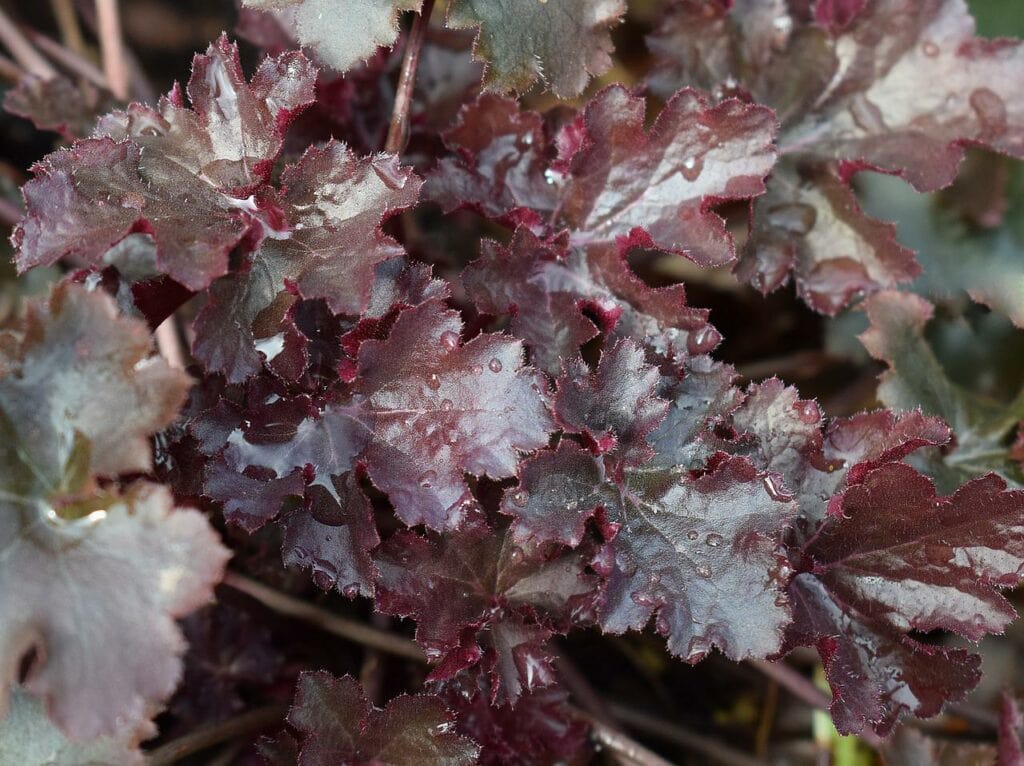
| USDA Zone: | 4–9 |
| Botanical Name: | Heuchera spp. |
| Mature Height: | 8–18 inches |
Coral bells are the name for several plant species within the Heuchera family. This plant’s small, bell-shaped flowers are fantastic attractants for hummingbirds and butterflies. So, in addition to looking great, they will attract beautiful visitors to your garden.
Most types of coral bells grow the best in partial shade. This is especially true if you are growing them in a hot climate. If you keep them wet in the shade, they are prone to fungal disease, but they will lose color and scorch easily in the hot sun. So, it’s a balancing act to give them the best mix of shade and sun.
15. Bunchberries
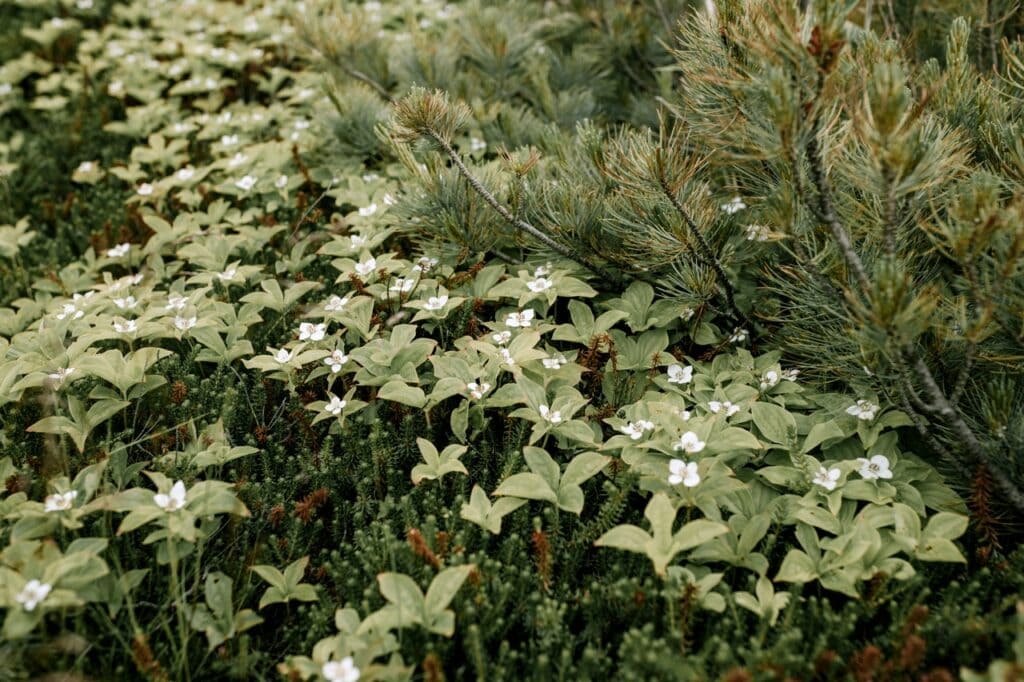
| USDA Zone: | 2–7 |
| Botanical Name: | Cornus canadensis |
| Mature Height: | 4–8 inches |
Bunchberries are an extremely hardy ground cover plant that is even found growing wild in Alaska. These plants aren’t exotic-looking like others on this list, but the nice green foliage and simple white flowers make a nice touch to the northern United States or Canadian gardens.
This plant prefers shade—a little bit of morning sun is ok. It does drink a lot of water, so its soil needs to stay moist. The biggest thing about bunchberries is the plant’s incredible resistance to cold. It even survives bitter Canadian winters year after year.
16. Lenten Rose

| USDA Zone: | 4–9 |
| Botanical Name: | Helleborus x hybridus |
| Mature Height: | 12–18 |
Don’t be fooled by the name; lenten rose plants are not actually roses. They are hybrid hellebores that belong to the buttercup family. Its rose-like flowers are part of where its name comes from, though.
The great thing about lenten rose plants is how easy they can grow. As long as you give them enough to drink, they don’t require much else. They thrive in partial and full shade and prefer shelter from strong winds.
17. Columbine
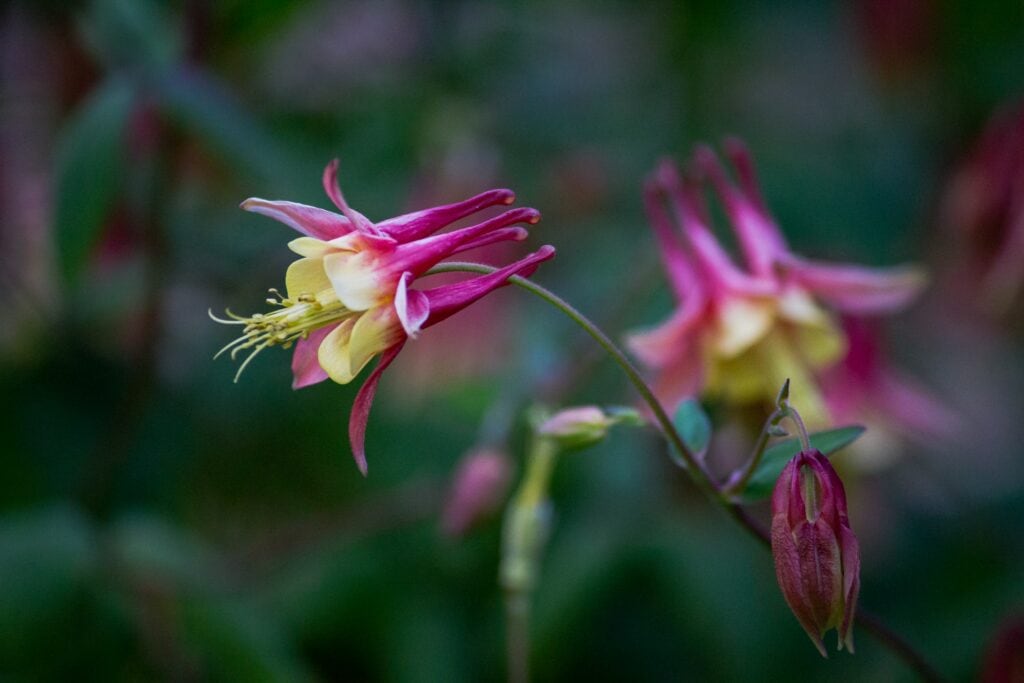
| USDA Zone: | 3–8 |
| Botanical Name: | Aquilegia spp. |
| Mature Height: | 1–3 feet |
If you live in a hot, sunny climate, columbines are not the flower for you. However, if you can provide them with at least partial shade and well-draining soil, they are a beautiful addition to your garden.
Because of the shade preference and drought tolerance (once established), they make a great choice for a woodland or rock garden. If your climate doesn’t get overly hot throughout the summer, full sun is not totally off-limits for these flowers.
18. Calendula
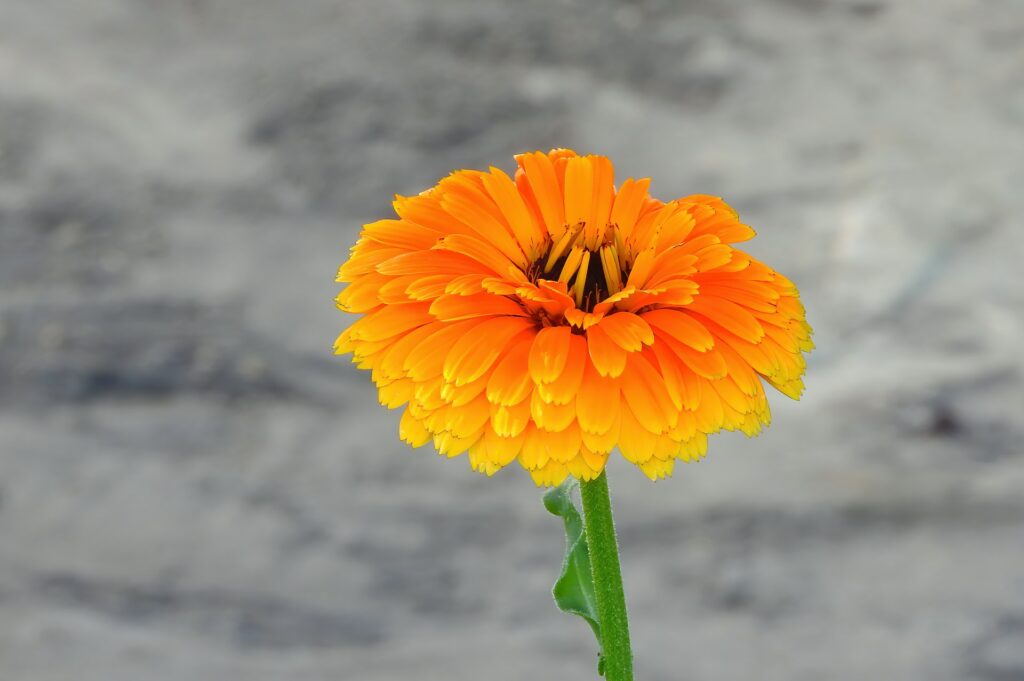
| USDA Zone: | 2a–11b |
| Botanical Name: | Calendula officinalis |
| Mature Height: | 1–2 feet |
You may also know calendula as pot marigold. If you live in zone 9 through 11, you can grow calendula as a perennial. Otherwise, it will grow as an annual in the other zones. On that note, if you live in a hot climate, this plant will do better in partial shade. As long as you can provide for its sun and water needs, calendula is reasonably easy to care for and grows well from seeds.
19. Spiderwort
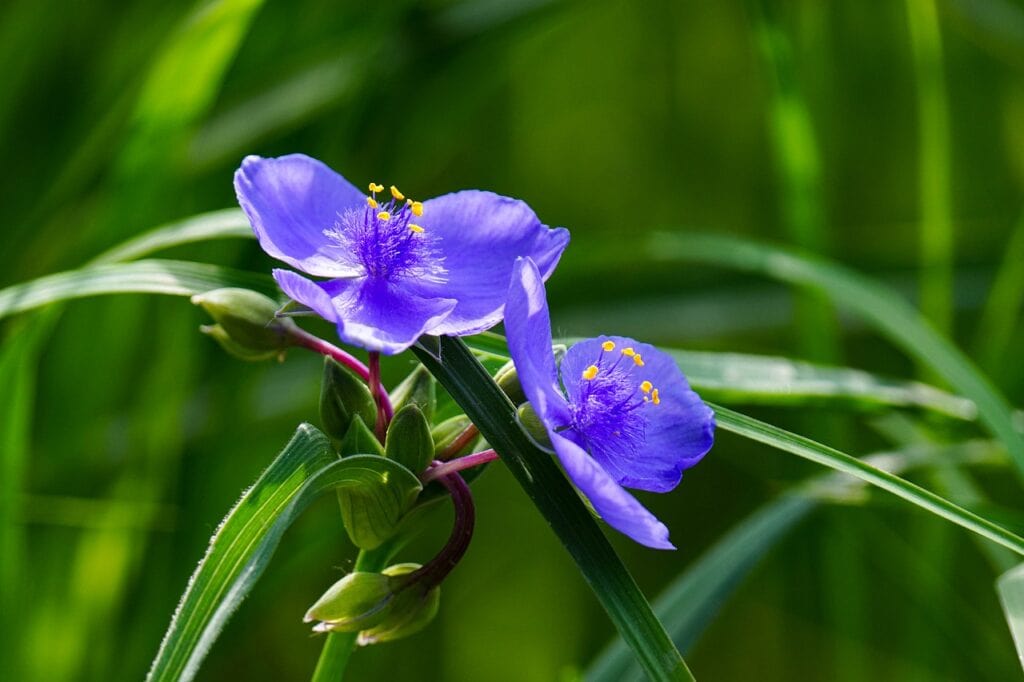
| USDA Zone: | 4–9 |
| Botanical Name: | Tradescantia |
| Mature Height: | 1–3 feet |
Spiderwort is a favorite among novice and experienced gardeners alike. It’s relatively easy to care for and makes a wonderful addition to almost any garden. Unlike many other flowers, spiderwort flowers only last one day. However, they bloom continuously for several weeks.
As for needs, spiderwort doesn’t have demanding needs. It grows in almost any soil and doesn’t require a lot of water. Although moist soil assists in the quick establishment in the garden. As for light, it typically prefers partial shade. However, it can grow in full sun or in full shade alternatively.
20. Viola
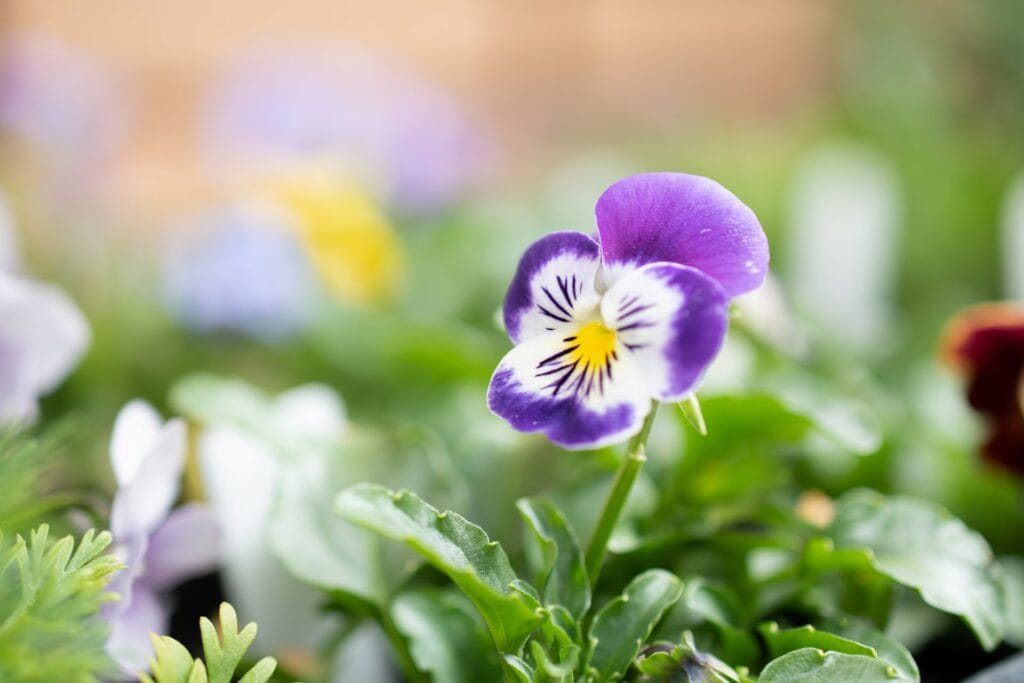
| USDA Zone: | 3–8 |
| Botanical Name: | Viola spp. |
| Mature Height: | 4–10 inches |
Violas comprise a vast family; there are over 500 species in the family. One neat thing about them is that they are edible. So, they often find themselves as a pretty garnish or colorful addition to a summer salad.
These plants prefer cool weather, and depending on the climate, they can bloom throughout the winter. Violas typically prefer full sun, but this varies by species because many do well in partial shade. The climate they’re in plays a significant role in their sun needs.
21. Epimedium

| USDA Zone: | 5–8 |
| Botanical Name: | Epimedium |
| Mature Height: | 8–12 inches |
As a general rule, epimedium plants are relatively easy plants to care for. Some more tolerant varieties will even remain green and leafy all year round. They are also quite resistant to pests and diseases.
Most epimedium plants don’t mind a little bit of morning sun. But they prefer partial or dappled shade. Too much heat from the sun and the leaves begin to lose their color, which is where a lot of their beauty comes from.
22. Toad Lily

| USDA Zone: | 4–8 |
| Botanical Name: | Tricyrtis hirta |
| Mature Height: | 2–3 feet |
If you’re designing a shade garden, white or purple-flowered toad lilies should be a major consideration. The flowers of a toad lily are often used in flower arrangements or cut flowers.
One thing to consider is wind. If you live in a windy climate, toad lilies will need extra protection because of their tall, slender stalks. Otherwise, they are a relatively easy plant to care for and do well with consistent watering in partial shade.
23. Lungwort
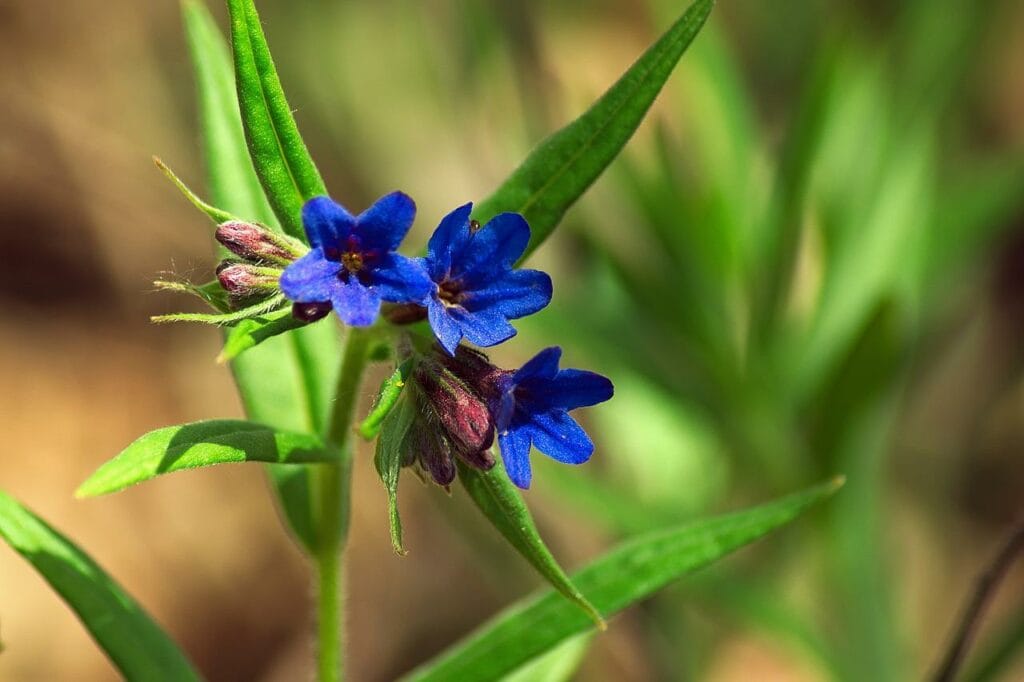
| USDA Zone: | 3–8 |
| Botanical Name: | Pulmonaria spp. |
| Mature Height: | 6–12 inches |
The Pulmonaria family of plants contains almost 20 different species. They make great ground cover additions to a shade garden. Its flowers are nothing to write home about, and they don’t last long. Lungwort’s leaves are its desirable trait for ground cover.
As long as the weather is still relatively cool, lungwort can withstand a reasonable amount of sun. However, as the temperatures rise, it needs at least partial shade to thrive. It also does well in full shade.
In Conclusion
There are certainly many options for perennials you can plant in the shady areas of your yard. Many of these plants thrive in the shade. But some of them do better as long as they get a little bit of sun. Either way, there’s no shortage of colors to choose from when planning your next garden.
- See also: 5 Types of Lawn Mower Blades
Featured Image Credit: Serhii Demchenko, Pexels
Contents
